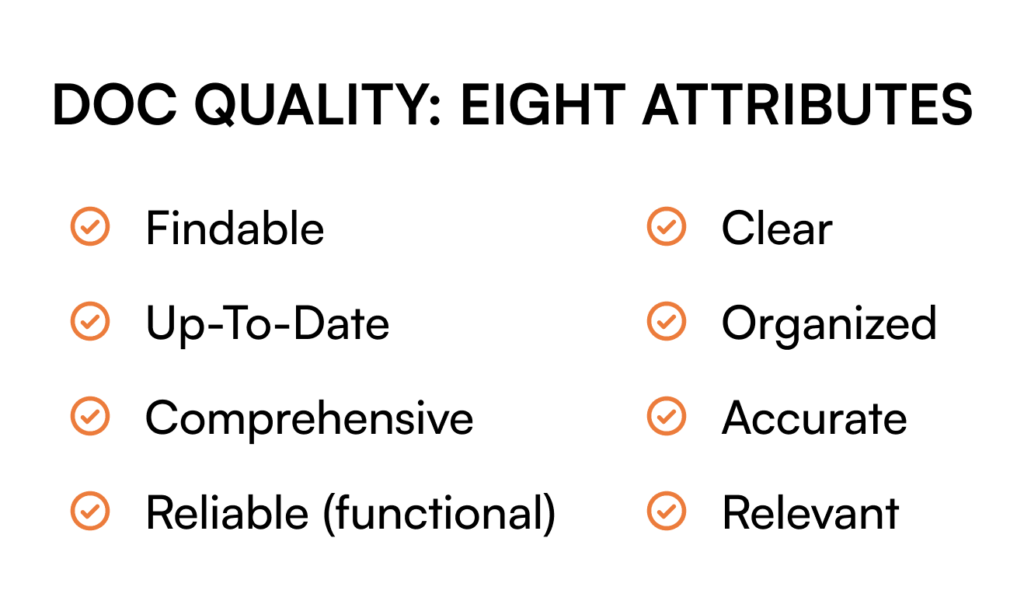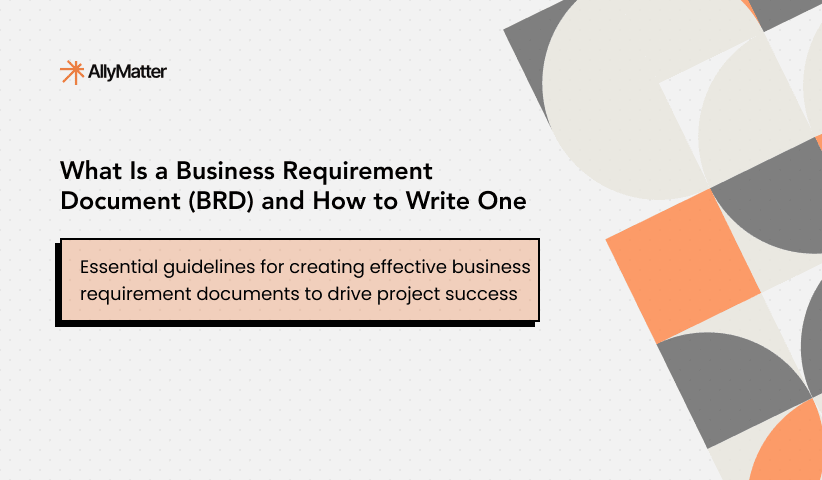High-performing teams thrive on clear processes, seamless collaboration, and a shared understanding of best practices. Yet, many fast-growing companies struggle with fragmented internal knowledge – outdated documents, inaccessible information, and an over-reliance on tribal knowledge.
The 2024 DORA report, a leading study on DevOps and engineering performance, highlights key factors that drive efficiency, productivity, and job satisfaction. One of the often-overlooked insights! The role of internal documentation in software delivery, team performance, and employee well-being.
Let’s break down what the report reveals and how you can build an internal knowledge base that supports both technical and non-technical teams.
The role of internal documentation in high-performance teams
The DORA 2024 report reaffirms what many already suspect, documentation isn’t just an administrative task; it’s a strategic enabler for scaling teams. The findings show that well-structured documentation supports productivity, reduces burnout, and fosters a culture of knowledge sharing.
Engineering teams, for example, rely on technical documentation to speed up deployments, resolve incidents, and onboard new developers efficiently. Similarly, non-technical teams benefit from accessible process documentation that standardizes workflows and improves decision-making. Without a central knowledge hub, organizations risk losing valuable insights and slowing down operational efficiency.

AI and internal documentation: Productivity booster or bottleneck?
DORA’s latest findings highlight AI’s growing role in documentation. Teams using AI-assisted tools for documentation saw a 7.5% improvement in quality. Automated documentation generators, AI-powered summarization, and contextual recommendations help reduce the effort required to maintain up-to-date knowledge bases.
However, AI is not a silver bullet. While it speeds up documentation processes, it may also reduce the time employees spend on what they consider valuable work. The key is to balance automation with human oversight, ensuring AI-generated documentation remains relevant, accurate, and actionable.

Stability vs. throughput: How documentation can tip the scale
One of the most striking insights from DORA is the trade-off between delivery speed and stability. High-performing teams optimize for both, yet many companies struggle to strike the right balance.
Documentation plays a crucial role in maintaining delivery stability. When deployment checklists, troubleshooting guides, and system architectures are well-documented, teams recover faster from failures. On the flip side, overly rigid documentation processes can slow throughput.
The best approach? Living documentation. Instead of static, outdated documents, teams should build an internal knowledge base that evolves alongside their workflows.

Learn more about building future-proof documentation.
Reducing burnout and enhancing knowledge sharing
Burnout is a persistent challenge in high-growth environments. The DORA report found that unstable priorities and lack of clear documentation significantly contribute to burnout. When employees spend excessive time searching for information, redoing work, or relying on fragmented knowledge, stress levels rise.
A well-structured internal knowledge base reduces cognitive load, enabling employees to focus on meaningful work instead of chasing scattered information. It also fosters a culture of learning, where teams share insights instead of hoarding knowledge.

Discover internal knowledge base best practices.
The eight key attributes of high-quality documentation
My key takeaways from the DORA report is that these eight attributes determine the effectiveness of internal documentation:
- Reliable (Functional): Ensures that documentation accurately reflects current processes and systems.
- Clear: Written in an understandable way without ambiguity.
- Findable: Easily accessible when needed, reducing wasted time searching for information.
- Comprehensive: Covers all necessary details without leaving gaps.
- Organized: Structured logically to improve navigation and usability.
- Up-to-date: Regularly maintained to reflect changes and new insights.
- Accurate: Free from errors and inconsistencies that could mislead users.
- Relevant: Focused on providing value to the intended audience.

When organizations prioritize these attributes, they see tangible benefits in operational efficiency, reduced rework, and improved onboarding experiences.

See how to structure an internal knowledge base.
How AllyMatter addresses DORA-identified challenges
Centralized knowledge capture for faster decision-making
Many growing companies struggle with information scattered across emails, chat threads, and personal notes. AllyMatter offers a centralized internal knowledge base, ensuring every department has access to the latest insights and best practices. Whether it’s technical documentation, process guidelines, or HR policies, teams can find what they need without friction.
AI-powered search for smarter information retrieval
With the rise of AI, intelligent search capabilities are essential. AllyMatter’s advanced search and filtering system allows teams to surface the most relevant documentation instantly, reducing time spent hunting for information.
Version control for accurate and reliable documentation
One of the biggest risks in internal documentation is outdated information. AllyMatter’s version control and approval workflows ensure that critical documents stay up to date, with clear audit trails of changes.
Collaboration features to reduce bottlenecks
To prevent silos, AllyMatter provides real-time collaboration tools, allowing multiple teams to contribute to and refine documentation together. No more bottlenecks caused by a single point of failure.
Analytics to measure documentation effectiveness
Understanding how documentation impacts team performance is crucial. AllyMatter’s analytics dashboard provides insights into usage patterns, helping companies refine their knowledge management strategy over time.
Audit trails that support compliance and accountability
Beyond version control, AllyMatter provides comprehensive audit trails that track every document change, access, and approval. This transparency supports both internal accountability and external compliance requirements.
Building a future-ready internal knowledge base
Documentation is no longer a “nice-to-have.” It’s a core driver of efficiency, collaboration, and employee well-being. By applying DORA’s findings, companies can shift from reactive documentation habits to a proactive, data-driven knowledge management approach.
The key takeaway? Investing in a well-structured internal knowledge base today will pay dividends in productivity, stability, and employee satisfaction tomorrow.
What’s the first step? Assess your current documentation quality, experiment with AI-assisted tools wisely, and ensure your knowledge base evolves with your organization’s needs.
Ready to transform your team’s documentation approach? Join our waitlist to get early access to AllyMatter’s comprehensive knowledge management platform.
Frequently asked questions
What makes documentation “living” compared to static documents?
Living documentation evolves automatically with your workflows and integrates with existing tools. Unlike static PDFs or documents that become outdated quickly, living documentation updates in real-time and surfaces relevant information when teams need it most.
How can AI improve internal documentation without replacing human oversight?
AI excels at generating first drafts, summarizing meeting notes, and suggesting content updates based on usage patterns. However, human reviewers ensure accuracy, context, and relevance. The best approach combines AI efficiency with human judgment for quality control.
What’s the difference between documentation quality and documentation quantity?
Quality documentation focuses on the eight key attributes: reliable, clear, findable, comprehensive, organized, up-to-date, accurate, and relevant. Having fewer high-quality documents that teams actually use is more valuable than extensive documentation that sits unused.
How do you measure if your internal documentation is reducing team burnout?
Track metrics like time spent searching for information, frequency of repeated questions, and employee feedback on information accessibility. Teams with effective documentation report less frustration and more time for meaningful work.


